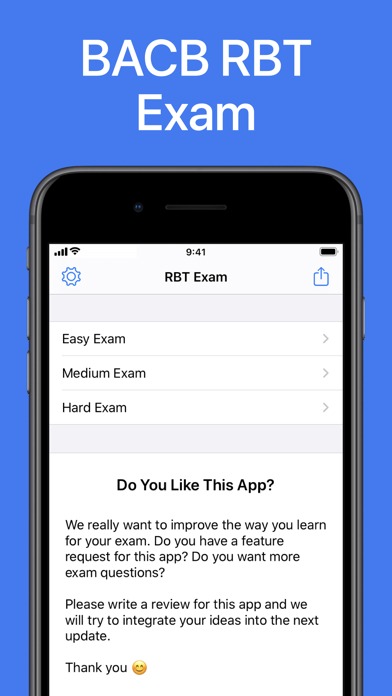Why Boulder Students Excel with Focused SAT and ACT Preparation
Boulder students bring a unique blend of intellectual curiosity, outdoor grit, and entrepreneurial energy to college admissions. That combination is powerful—but it needs to be channeled into a deliberate plan for standardized tests. Effective SAT tutoring and ACT tutoring in Boulder begin with a clear decision: choose the right test, build a roadmap, and refine skills with feedback-driven practice. Because the SAT and ACT reward strategy as much as content knowledge, the most successful Boulder test-takers treat prep like a semester course: diagnostic, targeted instruction, regular assessments, and test-day rehearsal.
The first step is a diagnostic comparison that captures strengths and blind spots. The SAT prioritizes data analysis, concise grammar rules, and multi-step math reasoning—often appealing to students who enjoy problem-solving and structured reading. The ACT moves faster and rewards quick recognition and execution, especially in the Science section, which is more about interpreting visuals and experiments than memorizing facts. Students involved in AP sciences and math may thrive on the ACT’s tempo, while others prefer the SAT’s deliberate reasoning. High-performing Boulder students benefit from aligning their prep with rigorous coursework: leverage algebra from school for Heart of Algebra on the SAT, and AP Lang analytical reading to sharpen ACT Reading timing. For families looking to leverage local academic strengths, an intentional plan for SAT prep Boulder or ACT prep Boulder builds on what students already do well.
Next comes skill sequencing. Strong prep programs structure modules around high-value subskills: command of evidence passages, punctuation and transitions, quantitative comparison, systems of equations, and data interpretation. Each session should close with a timed micro-drill to simulate pressure and solidify retention. Weekly benchmarks—like two timed sections or a half test—provide objective feedback. Tutors then triage errors: is the issue conceptual (content gap), procedural (setups and steps), or tactical (pacing, skipping, bubbling)? This framework saves time for busy students balancing robotics, trail runs, music, or research—and it turns practice into measurable score gains.
Consider a common Boulder profile: a student with a 3.9 GPA, strong calculus background, and humanities electives. An initial diagnostic shows high math accuracy but slow reading. A targeted plan uses SAT/ACT reading drills at 35–40 minutes, transitions grammar, and data charts from the science/graphics domains. Within six weeks, the student’s reading accuracy climbs by 15–20 percentage points through question-type batching and annotation discipline. The key is fit—picking SAT vs ACT early, then doubling down on the highest-return skills with consistency.
The Power of Authentic Practice: Real SATs pdf and Real ACTs pdf
High-score trajectories rely on authentic questions. While third-party practice can be helpful for volume, nothing replaces official exams for calibrating difficulty, timing, and answer patterns. Working through a Real SATs pdf or a Real ACTs pdf—sourced from official releases—exposes students to the exact phrasing, trap designs, and data setups they will face on test day. That fidelity builds both confidence and discernment: students learn to predict distractors, recognize classic grammar traps (modifier placement, pronoun clarity, verb tense), and decode math wording that hints at the simplest path to a solution.
A productive approach uses official sections in short, focused cycles. Start with one reading passage or one math module under strict time. Immediately post-drill, conduct a deep review: identify the root cause of each miss, write a brief “why wrong, why right” note, and collect patterns in an error log. When a pattern appears—say, misreading negative signs in algebra or falling for extreme words in answer choices—design a corrective mini-unit and re-test that exact skill two or three days later. This closed-loop system is what turns content knowledge into test-day performance.
For digital and paper workflows, print selected sections from released tests or use tablets with stylus annotation to mirror scratch-work. Always simulate the environment: quiet study space, minimal phone notifications, and a sharpened pacing sense. Students aiming for top percentiles should rotate through a suite of official exams across several weeks, with at least two full-length simulations at the same time of day as the real test. Boulder students often juggle training, rehearsals, and AP labs; pairing these full simulations with lighter review days preserves stamina without compromising recovery.
Case in point: a sophomore starting at 24 ACT composite focused on official science and reading sections twice weekly, annotating figures and predicting data trends before reading the questions. Paired with an error log and timed math “warm-ups,” this student jumped to a 30 composite in eight weeks. Another Boulder junior targeting the SAT used three released digital SATs, drilling “question families” (main idea vs. function vs. inference) and chart interpretation from math. A consistent 20-minute nightly routine—one reading set, five grammar questions, and four targeted math problems—lifted the score from 1210 to 1390. The common denominator was fidelity: official practice shaped instincts that generic materials couldn’t.
One-on-One Strategy: Private SAT and ACT Tutoring That Moves Scores
Personalized instruction compresses the learning curve by targeting what matters most for each student. High-impact Private SAT tutoring begins with a score audit and a goals-based roadmap: prioritize subskills tied to the next 80–120 points, assign bespoke drills, and set weekly checkpoints. The best one-on-one programs also teach a “test athlete” mindset—nutrition and sleep before full tests, breathing resets for tense passages, and pacing plans with pre-set skip thresholds. When a tutor calibrates content, tempo, and psychology, students unlock consistency under pressure.
Session structure matters. Start with a five-minute warm-up on a known-weak skill to establish momentum. Move into a guided practice block, progressively removing scaffolds until the student independently verbalizes the “playbook” for each question type. Close with a timed segment and post-mortem: categorize each miss (knowledge, process, or time), then assign a tiny follow-up drill due within 24 hours to cement the fix. Over several weeks, this cadence turns sporadic wins into reliable habits. For families pursuing Private ACT tutoring, the model is similar but emphasizes rapid decision-making, graph literacy, and passage triage—especially vital for ACT Science and Reading.
Effective tutors also synchronize prep with schoolwork. When a student is covering systems of equations or quadratic functions in math class, the tutor aligns SAT/ACT problem sets to exploit fresh classroom learning. During AP season, schedules shift toward maintenance with shorter, high-yield drills to prevent backsliding. Strategic breaks are built in after full-length tests to clear cognitive fatigue. Communication with families is tight but efficient: weekly scorecards summarize accuracy, pacing, and next steps without overwhelming the student.
Consider two Boulder case studies. First, a cross-country runner with limited weekday availability needed compact sessions and Sunday test simulations. The tutor built 45-minute precision blocks, favoring mixed-section sprints to sharpen transitions. Result: a 5-point ACT jump driven by improved pacing and fewer mid-test dips. Second, a STEM-leaning SAT candidate with near-perfect math but inconsistent grammar scores stalled at 1350. The fix was surgical: sentence-boundary rules, transitions taxonomy, and “no-change skepticism.” Within a month, the student hit 1510 and maintained it across two retakes. The throughline is targeted coaching—personalized, iterative, and anchored in the demands of the specific test.
Students seeking structured support in Boulder benefit from combining official practice with individualized guidance. Thoughtful SAT prep Boulder or ACT prep Boulder programs take the guesswork out of timing, build durable reading strategies, and close stubborn math and grammar gaps. Whether using curated banks of Real ACTs pdf and Real SATs pdf materials or coordinating intensive one-on-one work, the goal is the same: convert potential into a predictable, repeatable score under real test conditions.


